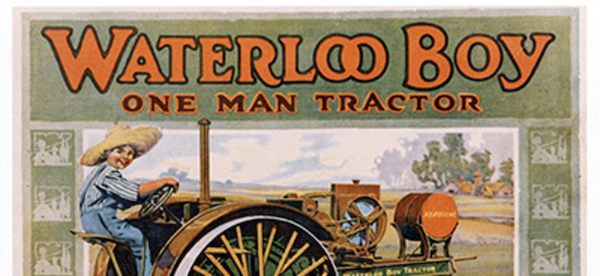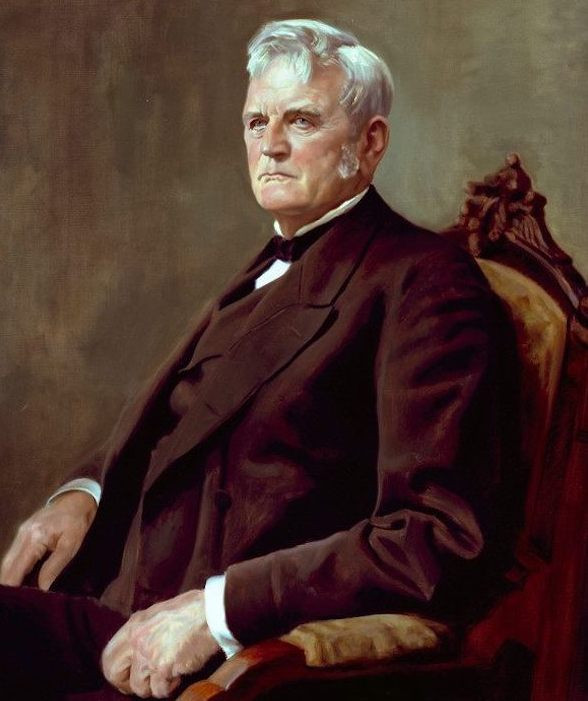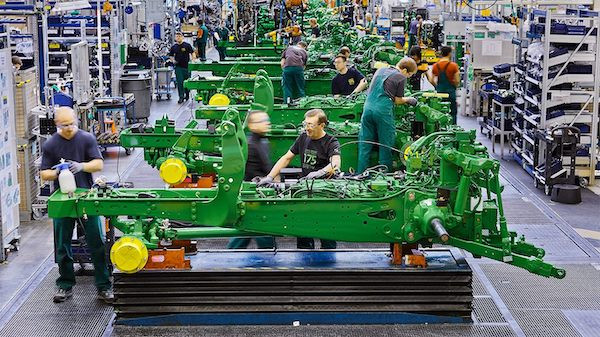Today, John Deere stands as a symbol of innovation and quality in agriculture and beyond. But the towering global enterprise we know today began with the vision of one man and a simple need to improve the lives of farmers. The story of John Deere History is a fascinating journey from a humble blacksmith shop in 1837 to a worldwide leader in manufacturing and technology. For over 180 years, the company has remained committed to its founder’s original purpose: empowering customers to achieve greater productivity. While John Deere is instantly recognizable for its iconic green tractors, their journey into tractor manufacturing didn’t begin until 1918 with the acquisition of the Waterloo Engine Gas Company.
Throughout its rich history, John Deere has been shaped by visionary leaders, evolving logos, and strategic factory expansions. These elements intertwine to create the compelling narrative of John Deere history. Driven by an enduring commitment to innovation, agriculture, and its customers, John Deere has consistently achieved breakthroughs that have defined its present success and continue to shape its future trajectory.
 John Deere vintage tractor
John Deere vintage tractor
Let’s delve into the pivotal moments that have marked John Deere history and transformed a small blacksmith operation into an agricultural and industrial powerhouse.
The Founder’s Forge: Who Was John Deere?
 Portrait of John Deere, the company founder
Portrait of John Deere, the company founder
John Deere the company is inseparable from the legacy of John Deere the man. His story is a testament to ingenuity and a dedication to solving the practical problems faced by farmers. In 1837, witnessing the struggles of farmers in Grand Detour, Illinois, with cast iron plows that constantly clogged in the sticky prairie soil, blacksmith John Deere took action. He crafted a plow from polished steel, sourced from a broken saw blade. This innovation, the first self-scouring steel plow, marked the beginning of John Deere history.
The revolutionary steel plow quickly gained popularity as it effortlessly cut through the heavy Midwest soil. Demand surged, and in 1848, Deere strategically relocated his business to Moline, Illinois. Moline offered significant advantages, including water power from the Mississippi River and better transportation infrastructure, crucial for expanding production and distribution. By 1850, production had reached approximately 1,600 plows annually. John Deere’s vision extended beyond plows, and the company began to diversify its product line. This expansion included the Hawkeye Riding Cultivator, introduced at the Iowa State Fair in 1863. This horse-drawn implement represented an early step towards more complex agricultural machinery.
Understanding the individuals who steered the company through different eras is crucial to appreciating John Deere history. Their leadership and decisions shaped the company’s growth and evolution.
Leadership Across Generations: Shaping John Deere History
The leadership of John Deere & Company has been a blend of family lineage and strategic appointments, each leader contributing uniquely to the company’s trajectory.
Charles Deere (1886 – 1907): Expanding the Reach
Charles Deere, John Deere’s second son, assumed leadership in 1886, succeeding his father. Having served as a successful salesman, Charles understood the importance of market expansion and customer relationships. A pivotal achievement during his tenure was establishing John Deere’s first branch house in Kansas City. These branch houses were more than just sales offices; they served as vital feedback loops, relaying on-the-ground information from farmers back to product development teams. This direct connection to customer needs fueled innovation. By 1907, when Charles Deere passed away, his leadership had firmly established John Deere as a leading agricultural implement manufacturer nationwide.
William Butterworth (1907 – 1936): Consolidation and Diversification
William Butterworth, Charles Deere’s son-in-law, became president in 1907 after a rapid ascent within the company. His leadership marked a period of significant consolidation and diversification. Butterworth spearheaded the integration of 11 factories and 25 sales organizations into a unified Deere & Company. This strategic move laid the foundation for the modern corporate structure of John Deere. Under his guidance, the product line broadened significantly. Notably, John Deere entered the combine harvester market in 1912, recognizing the growing mechanization of harvesting. A landmark decision in John Deere history occurred in 1918 with the acquisition of the Waterloo Engine Gas Company. This acquisition marked John Deere’s entry into the tractor business, a move that would define its future. Butterworth retired as president in 1928, becoming the company’s first chairman of the board. His influence extended beyond Deere, as he was later elected to the US Chamber of Commerce.
Charles Deere Wiman (1928 – 1955): Navigating the Great Depression and Beyond
Charles Deere Wiman, the great-grandson of John Deere, took the helm in 1928. He rose through the ranks, starting as a line employee, demonstrating a deep understanding of the company from the ground up. Wiman’s leadership was immediately tested by the economic turmoil of the Great Depression. Despite the hardships, he maintained a steadfast commitment to John Deere’s long-term success. This resilience led to the introduction of iconic tractors like the Model “A” in 1934 and the Model “B” in 1935. These tractors became symbols of надежность and efficiency during a challenging era. Wiman’s dedication ensured John Deere not only survived but emerged stronger from the Depression.
William Hewitt (1955-1982): Global Expansion and Modernization
William Hewitt, who married Charles Deere Wiman’s daughter, became president in 1955. His leadership ushered in an era of international expansion and product modernization. Hewitt recognized the global potential of John Deere, initiating the company’s transformation into a multinational corporation. In 1956, John Deere expanded into Europe by acquiring a share of a tractor company in Mannheim, Germany, and established a presence in Mexico. This global vision was coupled with product innovation. Hewitt oversaw the development and introduction of the “New Generation of Power” tractors in 1960. These four- and six-cylinder models represented a significant technological leap forward, setting new industry standards.
Robert Hanson (1982-1990): Resilience and Diversification
Robert Hanson, while not a Deere family member, made significant contributions to John Deere history. He became president in 1978 and Chairman and CEO in 1982, succeeding William Hewitt. Hanson navigated the company through the economic recessions of the 1980s. His leadership focused on efficiency and strategic diversification. Under Hanson, John Deere entered the health care market in 1985 with the establishment of John Deere Health Care, Inc., demonstrating the company’s willingness to explore new opportunities beyond its core agricultural business. Hanson’s tenure showcased adaptability and strategic thinking in challenging economic times.
Hans Becherer (1990 – 2000): Technology and Global Vision
Hans Becherer assumed leadership in 1990, emphasizing core values of innovation and global growth. His tenure saw significant advancements in agricultural technology and precision farming. Becherer fostered the development of advanced technologies that would revolutionize agriculture. He also oversaw the creation of a separate division for lawn and grounds care equipment, recognizing the distinct needs of this market segment. Further solidifying John Deere’s brand image, Becherer initiated a long-term partnership with the PGA and opened the John Deere Pavilion in 1997, a visitor center celebrating the company’s history and innovation.
Robert W. Lane (2000 – 2009): Global Efficiency and Shareholder Value
Robert W. Lane, with a background in construction equipment operations, became chairman in 2000. His focus was on maximizing global growth and efficiency. Lane implemented the Shareholder Value Added (SVA) model, emphasizing asset efficiency and return on investment. This strategy involved modernizing factories worldwide and upgrading dealer networks to enhance customer service. Lane’s leadership prioritized operational excellence and global competitiveness, positioning John Deere for continued success in the 21st century.
Global Footprint: Where Are John Deere Factories Located?
John Deere’s manufacturing presence reflects its global reach and commitment to serving diverse markets. From its initial factory in Moline, Illinois, the company has expanded to operate over 100 factories in more than 30 countries worldwide. This extensive network ensures that John Deere equipment is manufactured efficiently and accessible to customers globally.
 John Deere Factory Interior
John Deere Factory Interior
These factories produce a wide array of equipment for agriculture, lawn care, construction, outdoor recreation, and forestry. The global distribution of factories underscores John Deere’s commitment to being a truly international company, adapting to local market needs while maintaining consistent quality standards.
Evolving Identity: The John Deere Logo Through History
The John Deere logo, featuring a leaping deer, is one of the most recognizable corporate symbols globally. Its evolution reflects the company’s growth, adaptation, and modernization over time. Each logo iteration marks a specific phase in John Deere history.
- 1864: The first patent solidifies John Deere’s position as a manufacturing innovator.
- 1876: The first official trademark logo was introduced to protect against imitation as the company’s product line expanded. This marked the formal beginning of the John Deere brand identity.
- 1912: As product lines diversified to include planters, wagons, and harvesting equipment, the logo incorporated the slogan “The Trade Mark of Quality Made Famous by Good Implements,” emphasizing quality and reputation.
- 1936: Simplification for manufacturing efficiency. Details were removed for easier stenciling on products, reflecting a focus on streamlined production processes.
- 1937: Further simplification coincides with increased sales and the company’s centennial anniversary. This logo emphasized clean lines and brand recognition.
- 1950: A modernized logo established key elements for future designs: text style, slogan, deer silhouette, and removal of “Moline, IL,” reflecting national expansion.
- 1956: Expansion into construction led to dropping “Quality Farm Equipment” slogan. “John Deere” placed under the leaping deer for stronger brand emphasis across diverse markets.
- 1968: A contemporary logo designed for better reproduction across media as the company grew into a multi-divisional corporation.
- 2000: The current logo introduced color and a forward-leaping deer, symbolizing progress and a dynamic future. This logo represents the modern John Deere brand.
Product Innovation: What Does John Deere Manufacture?
Product innovation is at the heart of John Deere history. From the first steel plow to advanced precision agriculture technology, John Deere has consistently pushed the boundaries of equipment design and functionality.
- 1912: Diversification into planters, buggies, wagons, grain drills, and hay and harvesting equipment broadened John Deere’s agricultural offerings.
- 1918: Acquisition of Waterloo Gasoline Engine Company and introduction of the John Deere Waterloo Boy N tractor marked entry into the tractor market.
- 1927: The first John Deere combine harvester expanded harvesting capabilities.
- 1934: The Model A tractor, John Deere’s first row-crop tractor, followed by the Model B, established dominance in the tractor market.
- 1947: Model M tractor manufactured at Dubuque Works evolved into a bulldozer, marking entry into construction and forestry equipment.
- 1950: No. 8 Cotton Picker, the first two-row self-propelled cotton picker, revolutionized cotton harvesting.
- 1957: 14T baler made haying a one-person operation, improving efficiency with twine-tied bales.
- 1963: Entry into the consumer equipment market with lawn and garden tractors expanded John Deere’s reach to homeowners.
- 1992: Introduction of the first John Deere Gator, the Gator TH, pioneered the utility vehicle market.
- 1994: 8000 Series tractors set new standards in tractor technology and performance.
- 1996: 7760 Cotton Picker, the first round module cotton picker, further innovated cotton harvesting.
John Deere’s journey is a continuous evolution marked by leadership, brand adaptation, global expansion, and relentless product innovation. Looking back at John Deere history provides valuable insights into the company’s enduring success and its ongoing commitment to shaping the future of agriculture and industry.
For any inquiries regarding John Deere equipment, please contact your local John Deere dealer.
Connect with us on Facebook, Pinterest, or Twitter for more updates and stories!
[

